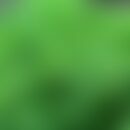Synonym(s)
DefinitionThis section has been translated automatically.
Hibisci flos are the officinal(DAB9) flowers of hibiscus, especially Hibiscus sabdariffa. The drug consists of the whole or cut, fleshy inner and outer calyxes of the flower, harvested during the fruiting season.
Quality is laid down in the European Pharmacopoeia (Ph. Eur.).
HMPC: Not processed
ESCOP: Not processed
Commission E: Negative monograph in the absence of efficacy studies. Can be considered a null monograph as no risks are known.
Empirical medicine: mild laxative, mild colds, catarrh.
Food industry: caffeine-free soft drinks, component of fruit or herbal teas.
Cosmetics: Hibiscus sabdariffa extract (INCI) is the mallow flower extract used in cosmetic formulations, see also Hibiscus syriacus extract.
IngredientsThis section has been translated automatically.
15-30% plant acids(ascorbic acid, malic acid, tartaric acid, citric acid), up to 28% hibiscus acid (lactone of hydroxycitric acid), oxalic acid, procatechuic acid, 1-2% anthocyanins such as hibiscin (red colorant) and flavonoids such as hibiscetin and gossypetin as yellow colorants as well as pectins.
Field of application/useThis section has been translated automatically.
Aromatic, mild laxative. As an aromatic, Hibiscus flos is used in soft drinks and various other beverages. tea mixtures.
LiteratureThis section has been translated automatically.
- Burger A et al. (1993) Hunnius Pharmaceutical Dictionary 7th edition Walter de Gruyter Berlin-New York p. 679
- https://arzneipflanzenlexikon.info/hibiscus.php
- Blaschek W (2015) Wichtl-Teedrogens and phytopharmaceuticals. A handbook for practice. Wissenschaftliche Verlagsgesellschaft Munich. S 330-331



